Name the Artist That Used Three Separate Video Recordings to Create Surrealistic Art Work?
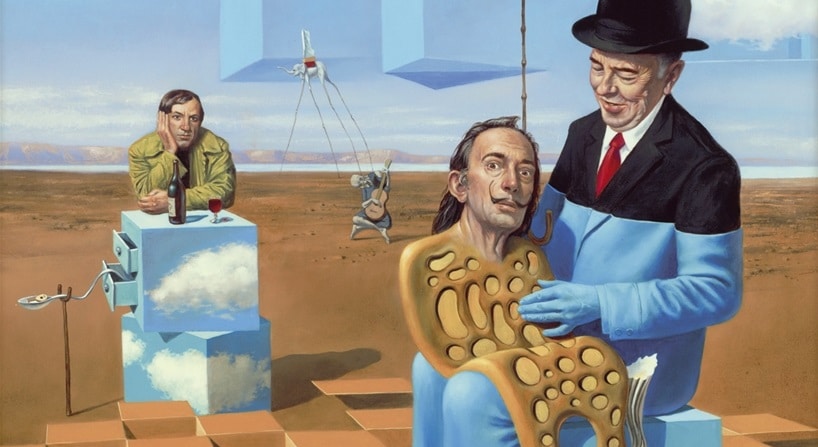
Surrealism is more than than an artistic style—it's an creative motility.
Different other creative movements, which tin be characterized past themes of imagery, color choices, or techniques, defining Surrealist fine art is slightly harder to do.
Surrealist artists—like Joan Miró, Salvador Dalí, Pablo Picasso, or Michael Cheval, amidst many others—seek to explore the unconscious mind as a way of creating art, resulting in dreamlike, sometimes bizarre imagery across countless mediums. The core of Surrealism is a focus on illustrating the heed's deepest thoughts automatically when they surface. This idea process for creating art known as "automatism."
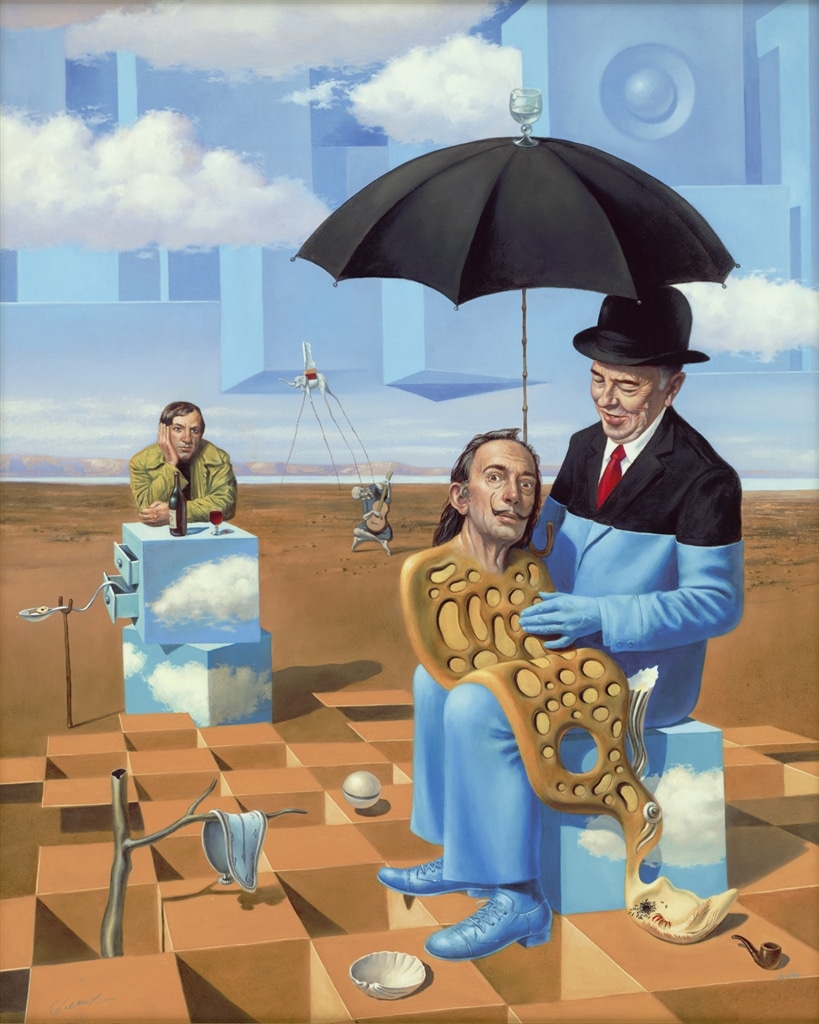
"Lullaby of Uncle Magritte" (2016), Michael Cheval
Over the years, Surrealism has resulted in a fascinating collection of artwork ranging from mythical landscapes, to obscure sculpture arrangements, to intriguing depictions of people and animals.

What Is Surrealism and How Did It Begin?
The poet Guilliame Apollinaire first coined the term "Surreal" in reference to the idea of an contained reality, existing "beneath" our conscious reality.
But the Surrealist motility initially surfaced in 1924 when French poet André Breton published his "Manifesto of Surrealism," influenced past the theories and writings on the unconscious mind by psychologist Sigmund Freud, the groundbreaking studies of Carl Jung, and the early 20thursday-century Dada motion.
While Surrealism started as a literary movement in the prose and verse of Breton and others, visual artists such as Giorgio de Chirico, Pablo Picasso, Francis Picabia, and Marcel Duchamp embraced Surrealism and were recognized in Breton's 1925 publication, "La Révolution Surréaliste."
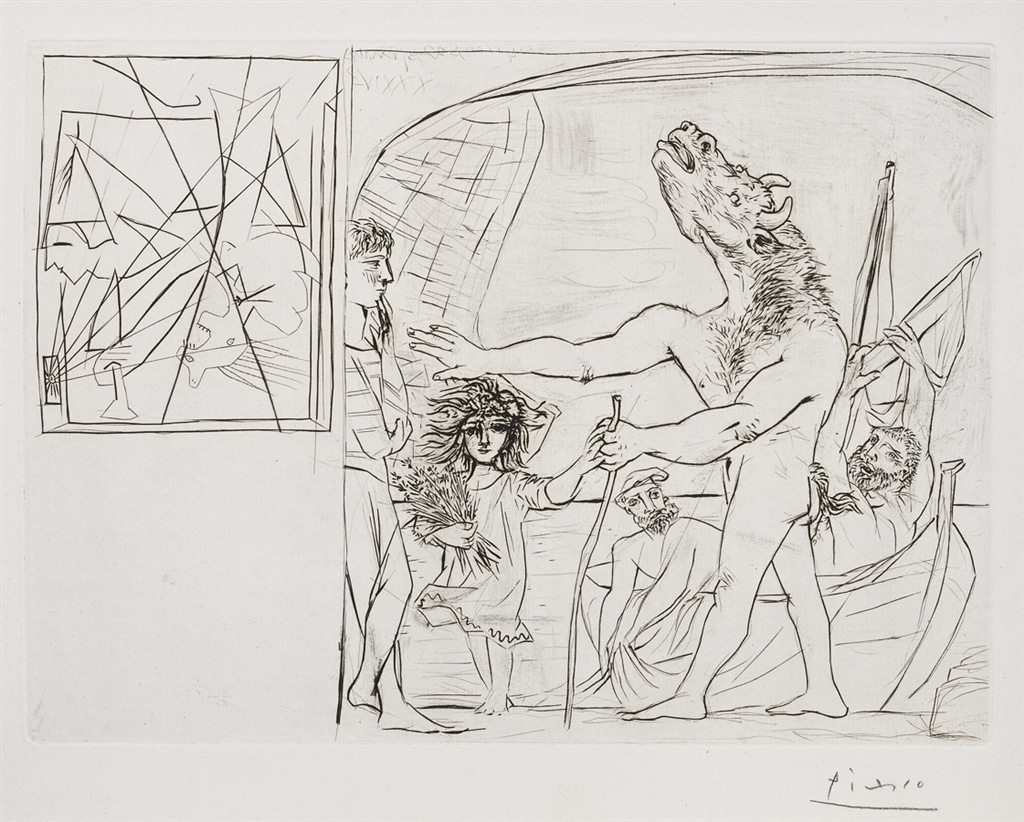
"Minotaure Aveugle Guide Par une Fillette, I" (1934). Etching from Picasso's Vollard Suite.
Early Surrealists challenged the constraints of consciousness and rationality in society to liberate the unconscious listen—a "superior reality," equally Breton chosen it.
A cardinal aspect of the Surrealist movement is a mode of expression called "automatism," which involves the act of automated or uncensored recording of the thoughts and images that sally into an artist's heed. With a focus on tapping into involuntary idea processes and interpreting dreams, Surrealist artwork is not limited to a specific artistic way or technique.
Throughout the 1920s, visual artists continued exploring Surrealist concepts in art, seeking complete creative freedom. The first-ever Surrealism exhibition, titled "La Peinture Surrealiste," took identify in 1925 at the Galerie Pierre in Paris, firmly establishing the visual component of the movement.
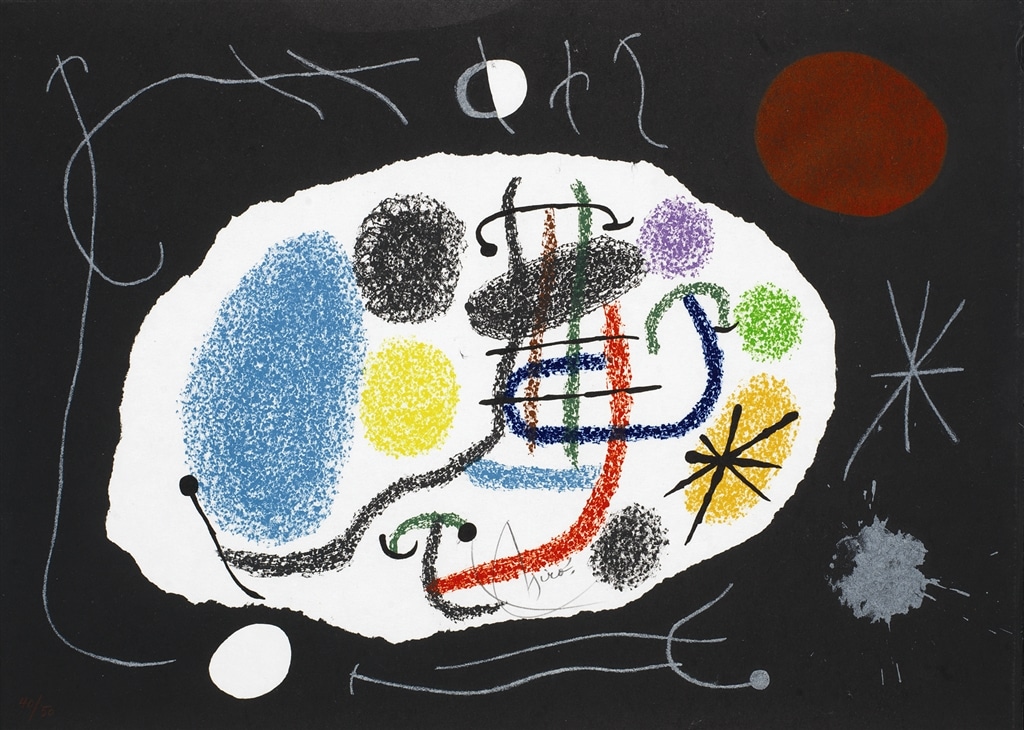
"Le Lezard aux Plumes d'Or II" (1971, K.800), Joan Miró
Though the Surrealist movement in Europe dissipated at the start of World State of war Ii, many Surrealist artists relocated to the Us where the motion was reignited, influencing renowned visual artists throughout the 20th century.
Artistic Techniques in Surrealist Art
Because of the emphasis on creative freedom, creative techniques in Surrealist artwork vary greatly. Notwithstanding, in depicting the dreamlike imagery so common in Surrealist art, a number of techniques were devised by Surrealist painters to aid capture the thoughts of the unconscious mind.
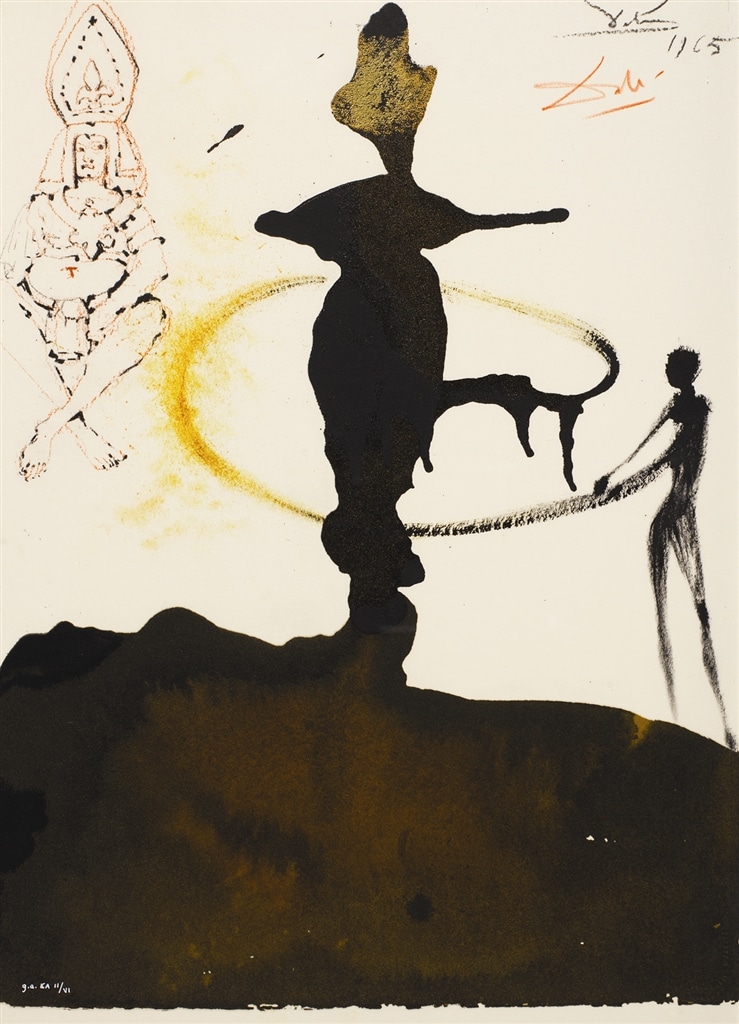
"Filiae Herodiadis Saltatio" (The Dance of Herodias' Daughter, 1964), Salvador Dalí
Frottage (rubbing a soft pencil or crayon over a textured surface, leaving remnants of the texture on the newspaper or canvass) and grattage (scraping the painted surface of canvas to generate a more visual texture) were techniques that created a partial, unfinished image, prompting the viewer to explore the missing details.
Simply Surrealist artists were non confined to just ane medium. Sculptures, painting, lithography, etching, film, photography, and other methods were all part of 1920s Surrealist fine art and proceed to touch on modernistic-day artists inspired past Surrealism.
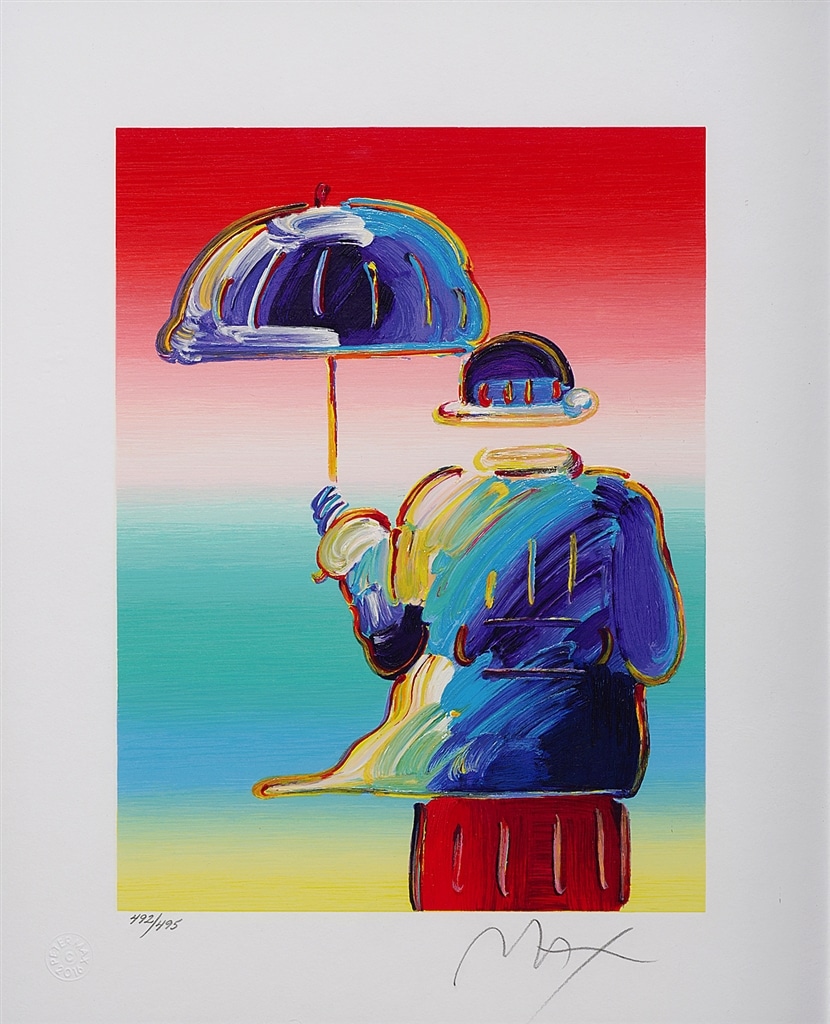
"Umbrella Man" (2016), Peter Max
Many Surrealist artists also combined different artistic styles in a single piece of work, exploring the presence of recognizable shapes paired with fluid, uncertain imagery to guide their viewers' minds without providing concise explanations.
The primary goal for Surrealist artists was to embrace automatism and to release the mind's imagination and unconscious thoughts, which was interpreted differently by each creative person.
Surrealist Artists of the 20thursday Century and Today
Salvador Dalí is one of the kickoff names that comes to heed when discussing Surrealist artists. Like many Surrealists, Dalí utilized diverse mediums to create his iconic dreamlike, hallucinatory visuals including etching, lithography, and painting.
Breton described Dalí'due south art every bit "a retrograde arts and crafts with the most extreme inventions of modern culture," highlighting Dalí's emblematic artistic style that provoked his viewers to explore literature, religious concepts, and more.
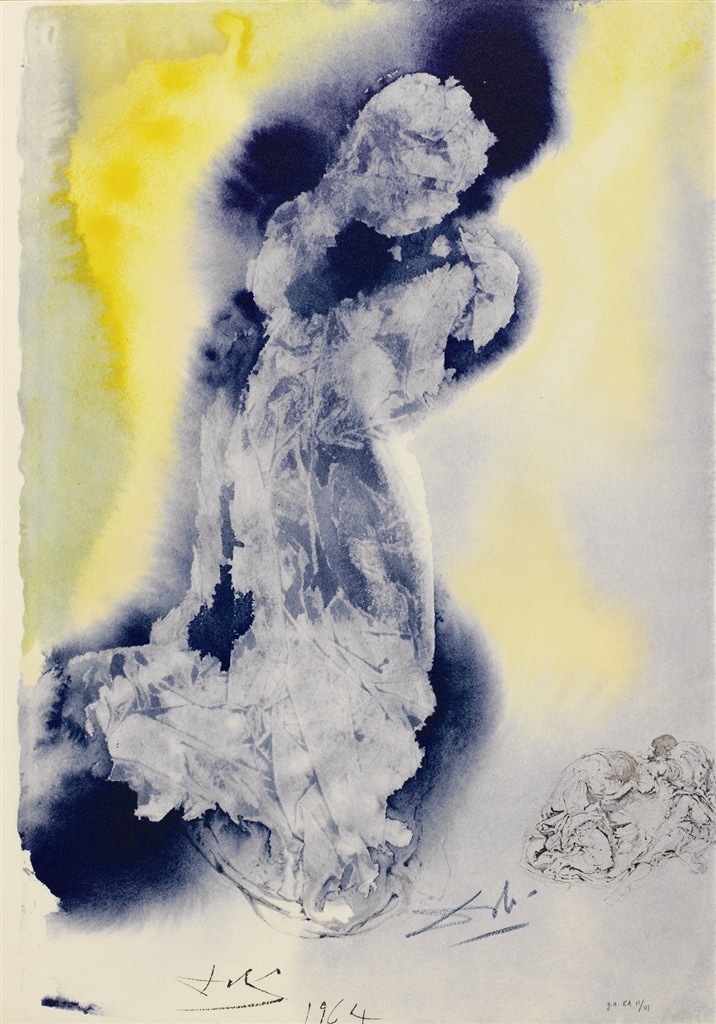
"Spiritus promptus est, caro vero infirma" (The spirit is willing, just the mankind is weak, 1964), Salvador Dalí
Another notable name, once described by Breton as "the most Surrealist of us all," is Joan Miró. Though Miró did non proclaim himself a Surrealist, he was undoubtedly influenced past the movement in much of his work.
Miró was famous for his works beyond numerous mediums, cartoon inspiration from Catalan folk art and the fine art of children. He emphasized vibrant colors and obscure shapes to invoke emotion and wonder in his audience.
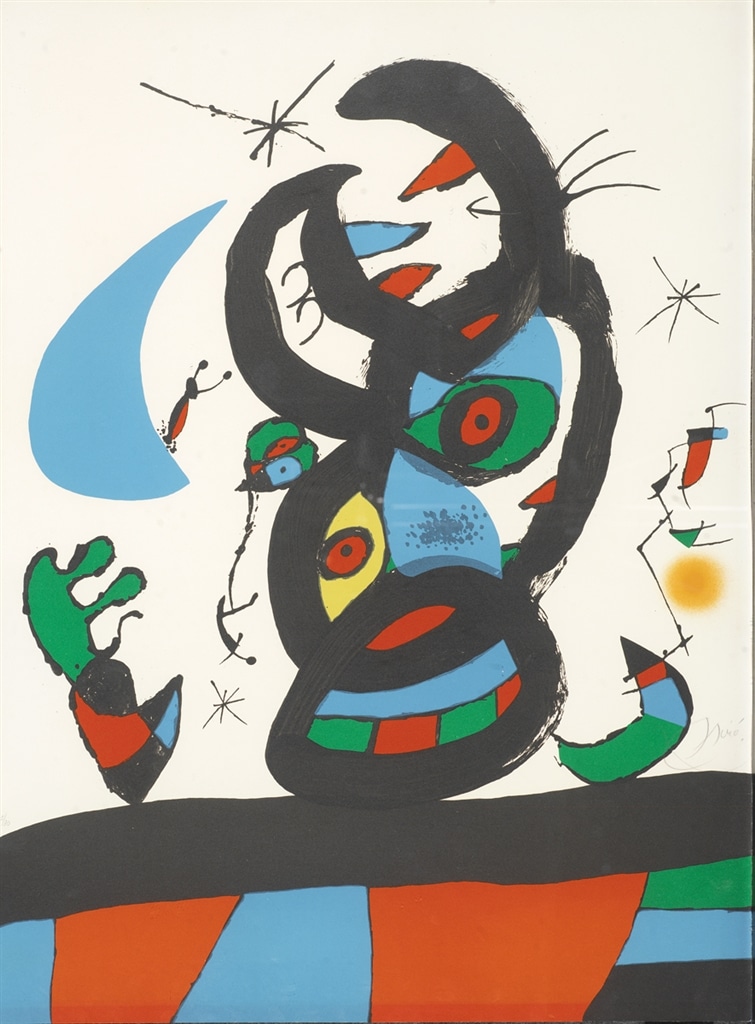
"Montroig I" (1974, K.953), Joan Miró
Contemporary artist Michael Cheval demonstrates how the Surrealism movement of the 1920s has influenced modern-day art with his imaginative "Absurdist" paintings that grew in popularity in the early 2000s. Similar many of the early Surrealists, Cheval uses music and poesy to inspire the subjects he paints in his mesmerizing, often metaphorical paintings.
"Absurdity, like any other genre, has its own rules. But, information technology implies everything that is outlying of common rules and boundaries," Cheval says. "'Absurdism' is an attempt to understand our life the way it truly is."
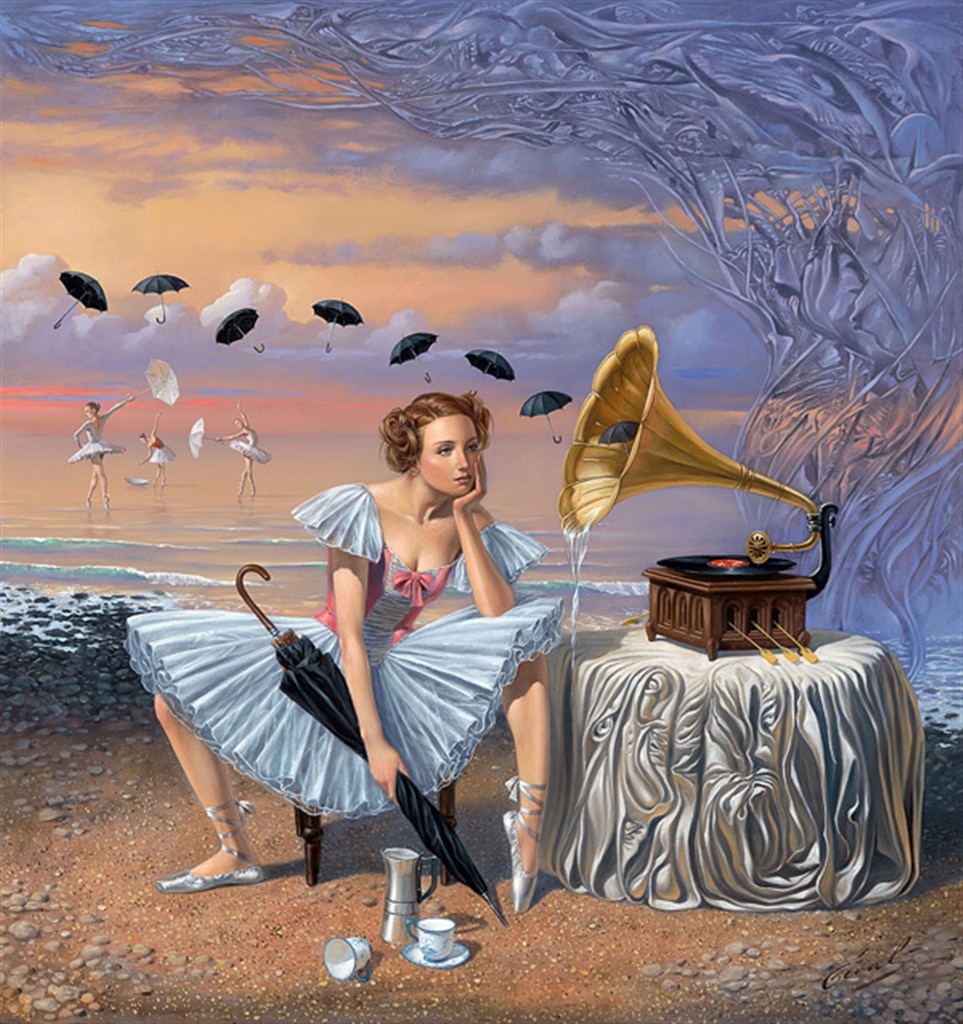
"Tune of Pelting" (2015), Michael Cheval
Another modern take on Surrealist art is seen in the work of Anatole Krasnyansky. Though originally gaining success for his stunning architectural mural paintings, Krasnyansky developed a surreal style after first seeing the rock band KISS.
This moving experience prompted Krasnyansky to brainstorm illustrating his emotion through his art with masked characters, reminiscent of the focus on the automatic recording of thoughts that shaped the Surrealist paintings of the 1920s.
While Krasnyansky's shapes are decidedly distinct, the masked figures represent "a multiplicity of faces" that the artist says represents how people suit and alter in different situations.
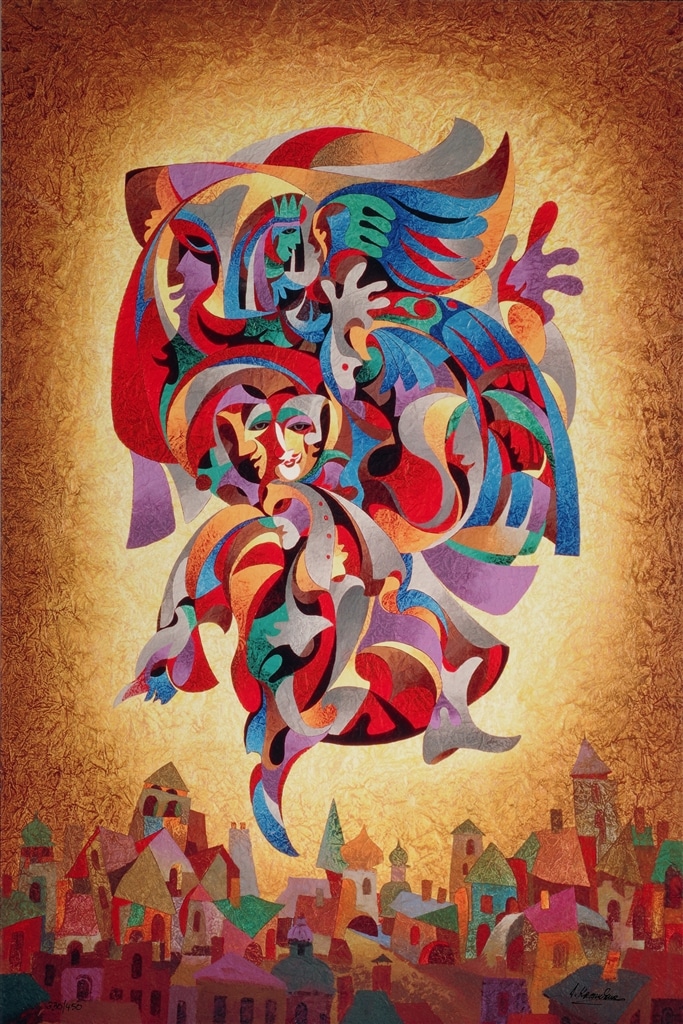
"Bluebird" (2016), Anatole Krasnyansky
While Surrealist art does non fit into a dandy box determined by a checklist of commonalities, its focus on automatism and the unconscious mind that motivated the original masters of the 1920s continues to touch on the works of mod-mean solar day artists and creators.
From the abstruse and colorful shapes of Miró's etchings to the composed, mysterious paintings of Krasnyansky, Surrealist artwork captures the imaginations of art lovers and collectors across the world.
If y'all're interested in collecting Surrealist fine art or want to know more about artists who specialize in Surrealism, register for our weekly live online sale or contact our gallery squad at ane-800-521-9654, ext. iv or at sales@parkwestgallery.com
LEARN More than ABOUT SURREALISM:
- How Kiss Inspired Anatole Krasnyansky'south Surreal Way
- Michael Cheval Finds the Absurd in Surrealism
Source: https://www.parkwestgallery.com/what-is-surrealism-art/
0 Response to "Name the Artist That Used Three Separate Video Recordings to Create Surrealistic Art Work?"
Post a Comment